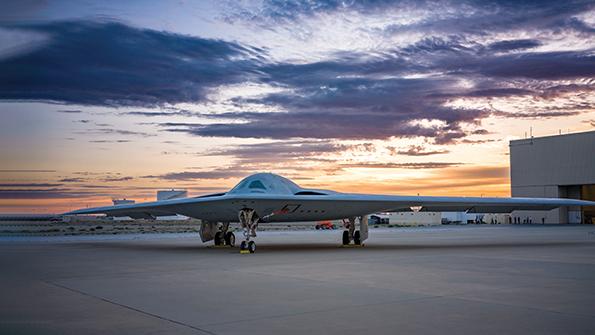
Images released during the week of the Air and Space Force Association’s Air, Space & Cyber Conference revealed a head-on view that allowed for a reliable estimate of the wingspan.
Credit: Northrop Grumman
A Northrop Grumman B-21 bomber has been spotted conducting taxi tests in daylight in Palmdale, California, revealing a first, distant glimpse of the aft section and trailing edge of the Raider. The start of moving ground tests provides another milestone on the path to a scheduled first flight by...
Subscription Required
B-21 Begins Moving Ground Tests Before First Flight is published in Aerospace Daily & Defense Report, an Aviation Week Intelligence Network (AWIN) Market Briefing and is included with your AWIN membership.
Already a member of AWIN or subscribe to Aerospace Daily & Defense Report through your company? Login with your existing email and password.
Not a member? Learn how you can access the market intelligence and data you need to stay abreast of what's happening in the aerospace and defense community.






